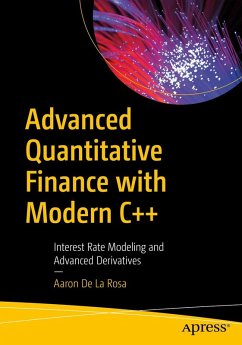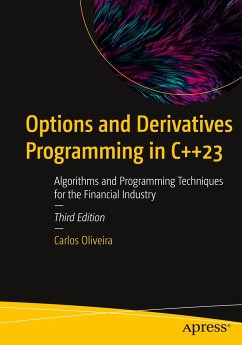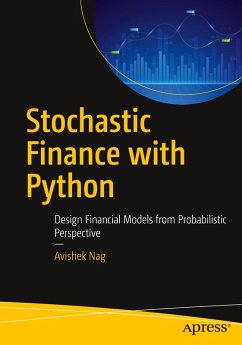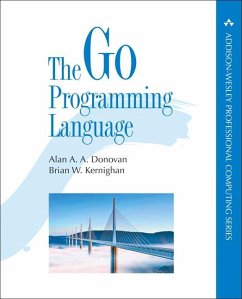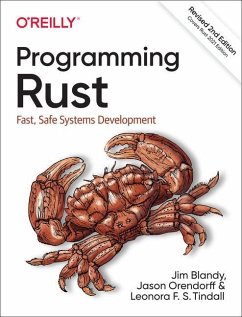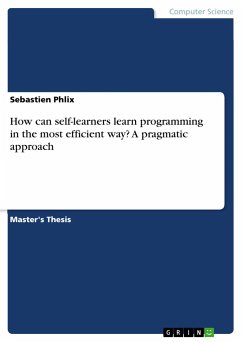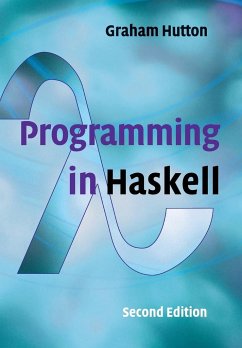
Functional Programming in Finance Markets
A Practical Guide to Using Functional Programming to Solve Analytical Problems in the Financial Markets
Versandkostenfrei!
Erscheint vorauss. 28. Juli 2026
46,99 €
inkl. MwSt.
The work carried out in many financial institutions has demonstrated that successful trading operations can be built using functional programming. However, there remains an entry barrier due to the lack of practical knowledge required to apply these techniques effectively. This book lowers that barrier by offering accessible insights that are enriched with real-world expertise.While functional programming has been around for many decades, its benefits have become increasingly apparent in more recent years. This is due to a variety of factors, including advancements in processing speeds, the gr...
The work carried out in many financial institutions has demonstrated that successful trading operations can be built using functional programming. However, there remains an entry barrier due to the lack of practical knowledge required to apply these techniques effectively. This book lowers that barrier by offering accessible insights that are enriched with real-world expertise.
While functional programming has been around for many decades, its benefits have become increasingly apparent in more recent years. This is due to a variety of factors, including advancements in processing speeds, the growth in the use of distributed computing, and the availability of functional programming languages on platforms which are popular in finance - particularly .NET and JVM.
The opening chapters introduce the fundamental concepts in functional programming and illustrate how these concepts are used in solving problems in the fixed income markets. As your understanding deepens, later chapters explore increasingly complex examples in areas such as valuation, risk analysis, hedging, and deal automation. The concluding chapters examine common programming patterns that arise across the solutions, including those influenced by category theory, such as functors, semigroups, monoids, and monads. At each stage, the book presents carefully selected algorithms to reinforce the practical understanding of the solutions.
In the end, this book provides an accessible introduction to the use of functional programming in the financial markets by bridging the gap between the theory of functional programming and its practical application in areas of finance.
What You Will Learn
Develop functions for performing common financial market operations, such as valuing financial assets, calculating risks, hedging those risks, and automating buy/sell decisions.Use functional programming to extract business insights from large datasets using numerical and statistical techniques. Effectively apply various functional programming features, such as recursion, higher-order functions, and list processing, in creating these solutions
Who This Book Is For
Aspiring professionals entering the financial markets; professional software engineers seeking a deeper understanding of how functional programming is utilized in modern capital markets; and finance professionals (including traders, risk managers, and other business users) who want to grasp the implementation details behind the "black box" tools they rely on in their day to day lives.
While functional programming has been around for many decades, its benefits have become increasingly apparent in more recent years. This is due to a variety of factors, including advancements in processing speeds, the growth in the use of distributed computing, and the availability of functional programming languages on platforms which are popular in finance - particularly .NET and JVM.
The opening chapters introduce the fundamental concepts in functional programming and illustrate how these concepts are used in solving problems in the fixed income markets. As your understanding deepens, later chapters explore increasingly complex examples in areas such as valuation, risk analysis, hedging, and deal automation. The concluding chapters examine common programming patterns that arise across the solutions, including those influenced by category theory, such as functors, semigroups, monoids, and monads. At each stage, the book presents carefully selected algorithms to reinforce the practical understanding of the solutions.
In the end, this book provides an accessible introduction to the use of functional programming in the financial markets by bridging the gap between the theory of functional programming and its practical application in areas of finance.
What You Will Learn
Develop functions for performing common financial market operations, such as valuing financial assets, calculating risks, hedging those risks, and automating buy/sell decisions.Use functional programming to extract business insights from large datasets using numerical and statistical techniques. Effectively apply various functional programming features, such as recursion, higher-order functions, and list processing, in creating these solutions
Who This Book Is For
Aspiring professionals entering the financial markets; professional software engineers seeking a deeper understanding of how functional programming is utilized in modern capital markets; and finance professionals (including traders, risk managers, and other business users) who want to grasp the implementation details behind the "black box" tools they rely on in their day to day lives.




